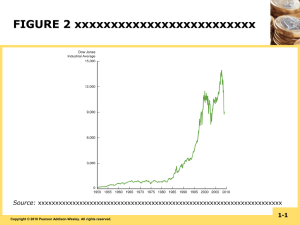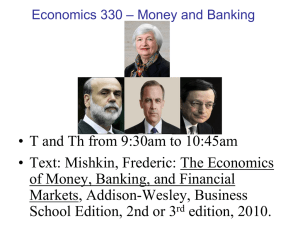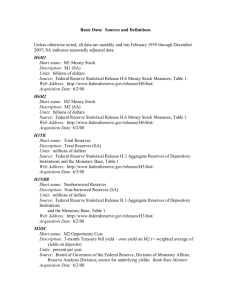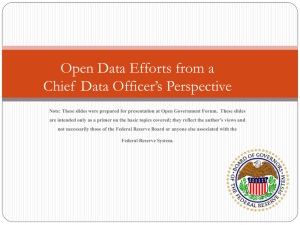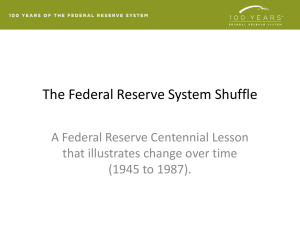lecture1
advertisement
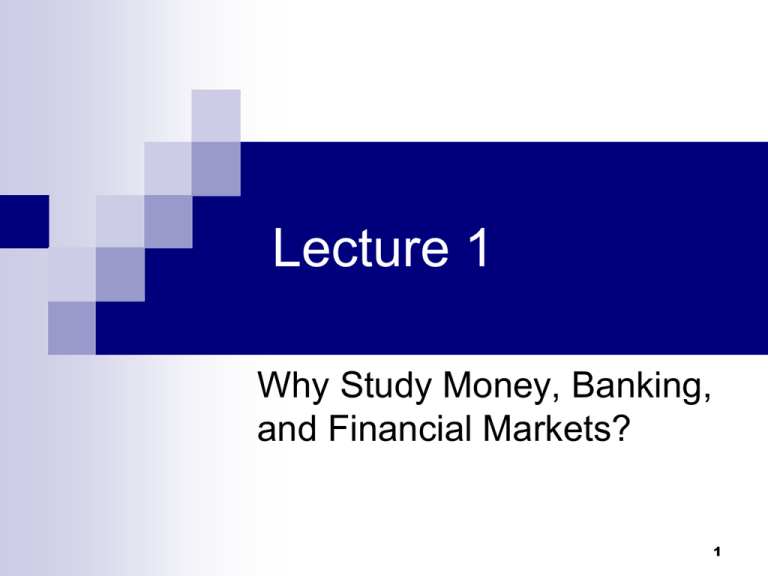
Lecture 1 Why Study Money, Banking, and Financial Markets? 1 Why Study Money, Banking, and Financial Markets To examine how financial markets such as bond, stock and foreign exchange markets work To examine how financial institutions such as banks and insurance companies work To examine the role of money in the economy 2 Financial Markets Markets in which funds are transferred from people who have an excess of available funds to people who have a shortage of funds 3 The Bond Market and Interest Rates A security (financial instrument) is a claim on the issuer’s future income or assets A bond is a debt security that promises to make payments periodically for a specified period of time An interest rate is the cost of borrowing or the price paid for the rental of funds 4 Interest Rates on Selected Bonds, 1950–2008 Sources: Federal Reserve Bulletin; www.federalreserve.gov/releases/H15/data.htm. The Stock Market Common stock represents a share of ownership in a corporation A share of stock is a claim on the earnings and assets of the corporation 6 Stock Prices as Measured by the Dow Jones Industrial Average, 1950–2008 Source: Dow Jones Indexes: http://finance.yahoo.com/?u. The Foreign Exchange Market The foreign exchange market is where funds are converted from one currency into another The foreign exchange rate is the price of one currency in terms of another currency The foreign exchange market determines the foreign exchange rate 8 Exchange Rate of the U.S. Dollar, 1970–2008 Source: Federal Reserve: www.federalreserve.gov/releases/H10/summary/indexbc_m.txt/. Banking and Financial Institutions Financial Intermediaries—institutions that borrow funds from people who have saved and make loans to other people Banks—institutions that accept deposits and make loans Other Financial Institutions—insurance companies, finance companies, pension funds, mutual funds and investment banks 10 Money and Business Cycles Evidence suggests that money plays an important role in generating business cycles Recessions (unemployment) and booms (inflation) affect all of us Monetary Theory ties changes in the money supply to changes in aggregate economic activity and the price level 11 Money Growth (M2 Annual Rate) and the Business Cycle in the United States, 1950–2008 Note: Shaded areas represent recessions. Source: Federal Reserve Bulletin, p. A4, Table 1.10; www.federalreserve.gov/releases/h6/hist/h6hist1.txt. Money and Inflation The aggregate price level is the average price of goods and services in an economy A continual rise in the price level (inflation) affects all economic players Data shows a connection between the money supply and the price level 13 Aggregate Price Level and the Money Supply in the United States, 1950–2008 Sources: www.stls.frb.org/fred/data/gdp/gdpdef; www.federalreserve.gov/releases/h6/hist/h6hist10.txt. Average Inflation Rate Versus Average Rate of Money Growth for Selected Countries, 1997–2007 Source: International Financial Statistics. Money and Interest Rates Interest rates are the price of money Prior to 1980, the rate of money growth and the interest rate on long-term Treasure bonds were closely tied Since then, the relationship is less clear but still an important determinant of interest rates 16 Money Growth (M2 Annual Rate) and Interest Rates (Long-Term U.S. Treasury Bonds), 1950–2008 Sources: Federal Reserve Bulletin, p. A4, Table 1.10; www.federalreserve.gov/releases/h6/hist/h6hist1.txt. How We Will Study Money, Banking, and Financial Markets A simplified approach to the demand for assets Basic supply and demand to explain behavior in financial markets The concept of equilibrium An approach to financial structure based on transaction costs and asymmetric information 18

